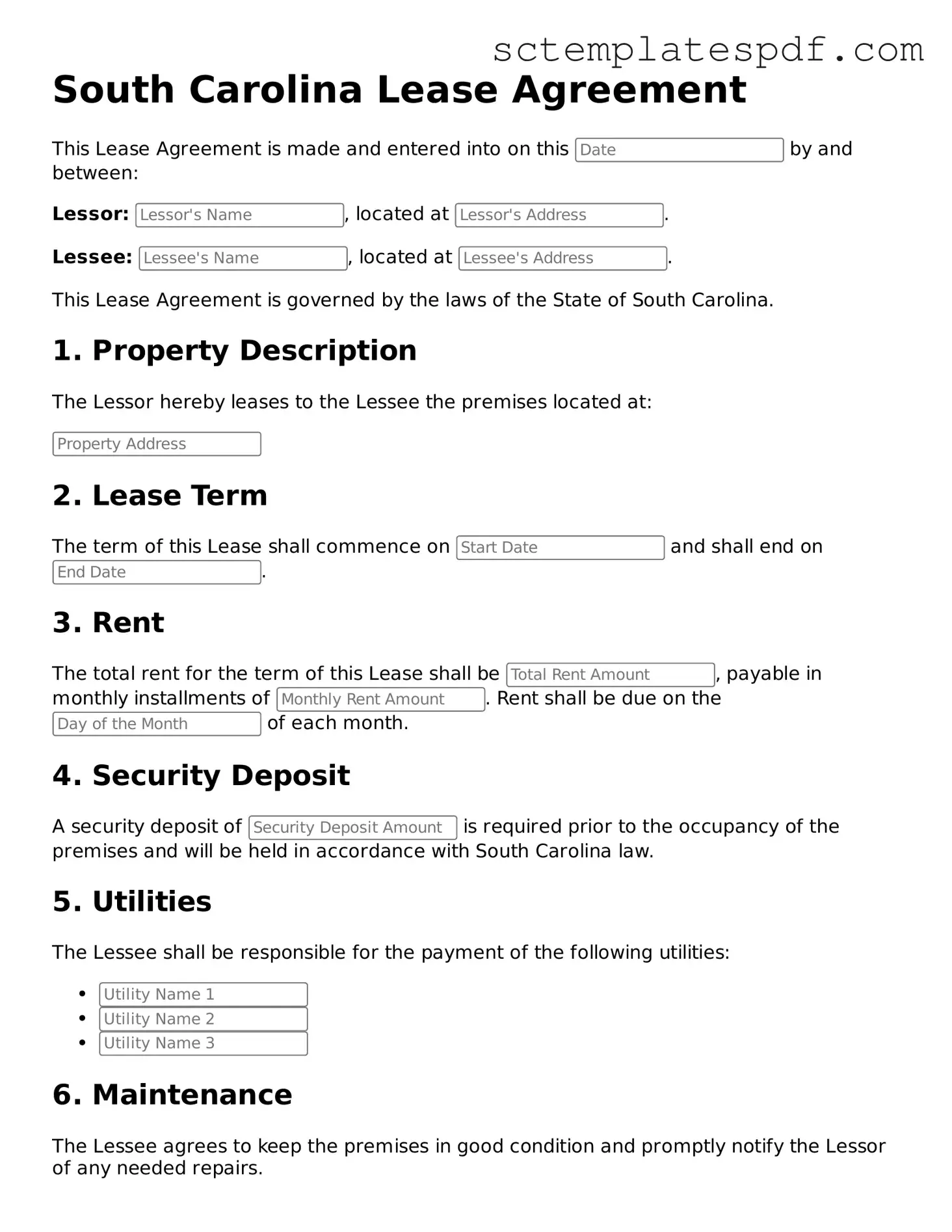In South Carolina, a Lease Agreement serves as a crucial document that outlines the relationship between landlords and tenants, establishing clear expectations and responsibilities for both parties. This legally binding contract typically includes essential details such as the duration of the lease, the amount of rent due, and the specific terms regarding payment methods. Additionally, the form addresses important provisions like security deposits, maintenance responsibilities, and rules concerning pets or alterations to the property. By clearly defining the rights and obligations of each party, the Lease Agreement helps to prevent misunderstandings and disputes that may arise during the tenancy. Furthermore, it often includes clauses related to termination and renewal of the lease, ensuring that both landlords and tenants are aware of their options as the agreement progresses. Understanding the components of the South Carolina Lease Agreement is vital for anyone entering into a rental arrangement in the state, as it lays the foundation for a smooth and respectful landlord-tenant relationship.
